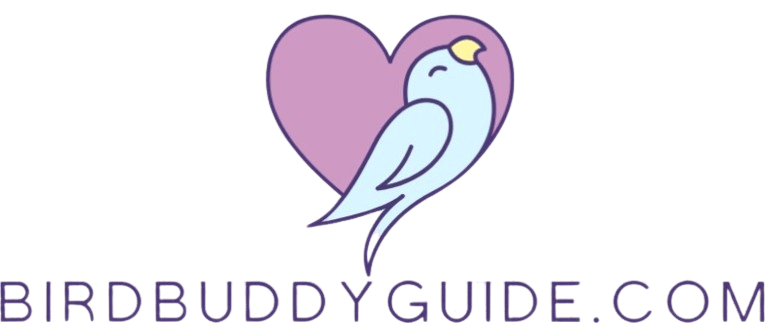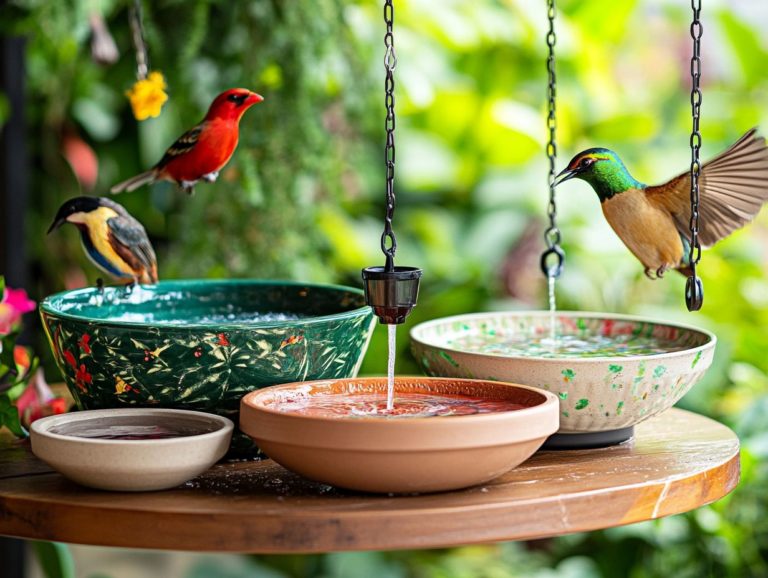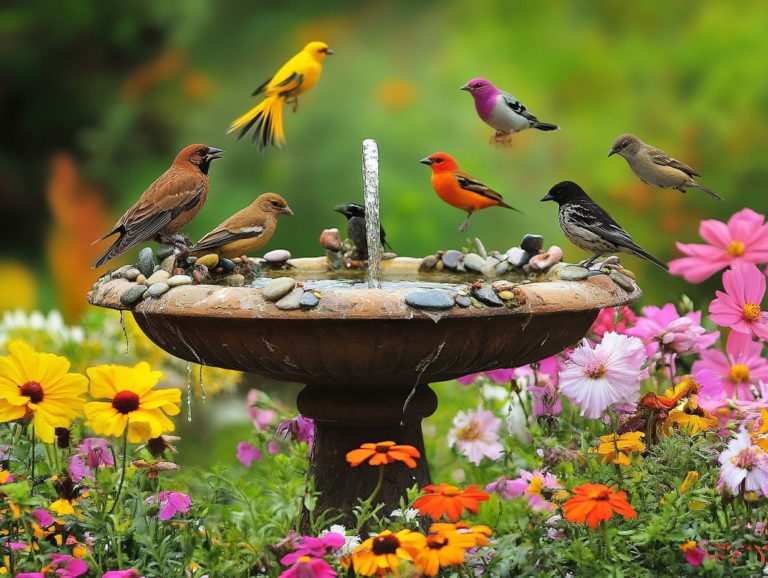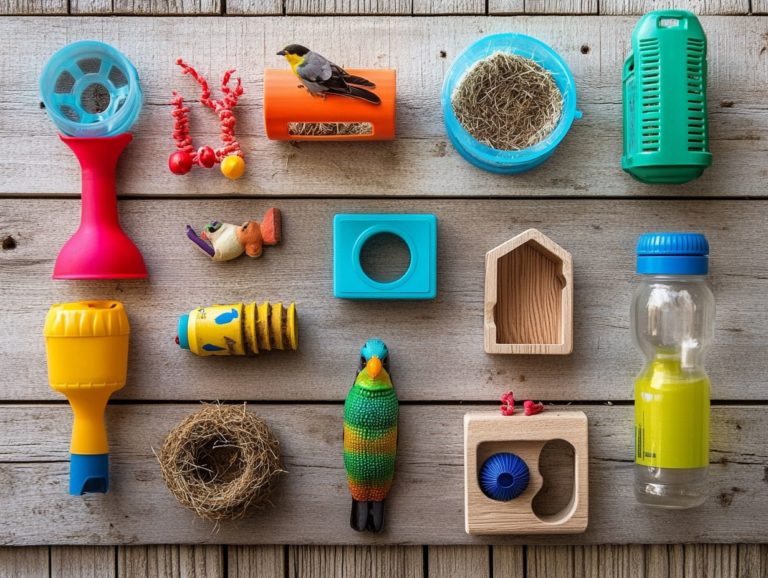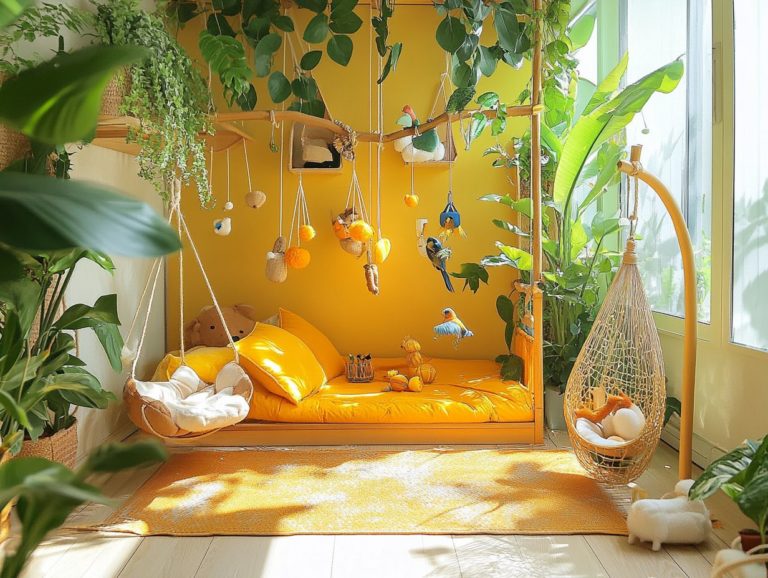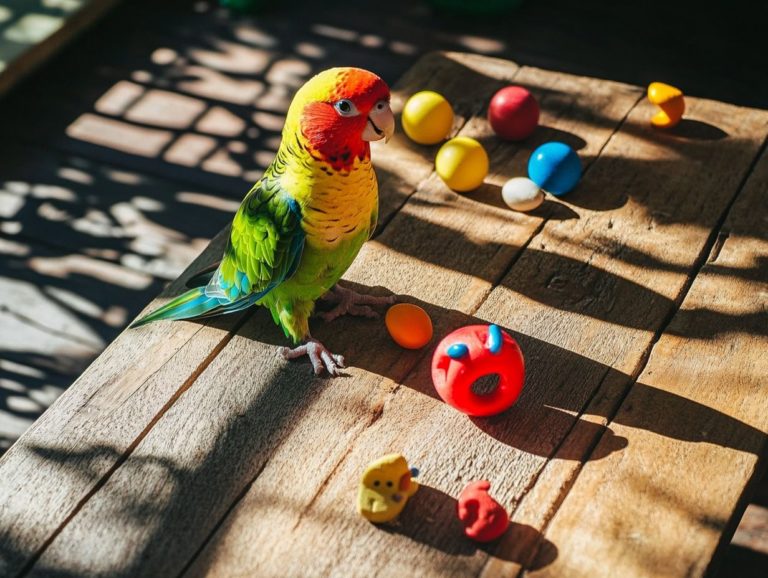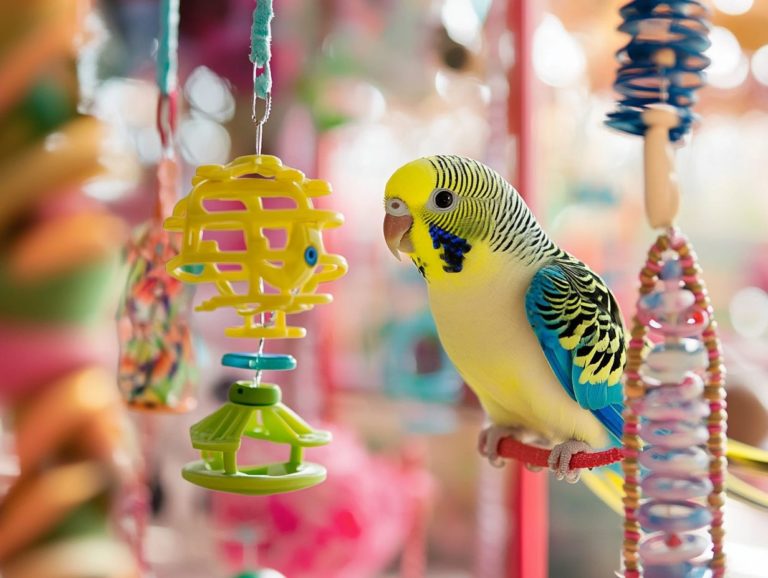How to Choose Safe Materials for Bird Toys
When it comes to ensuring your bird is happy and healthy, selecting the right toys is essential.
With many options available, understanding the materials used in bird toys is crucial. This guide reviews common materials, highlights potential risks of unsafe choices, and offers tips for selecting safe toys.
It also covers natural and DIY alternatives and discusses how to care for your bird’s playthings, ensuring a safe and engaging environment. Your bird’s happiness and safety start right here let’s dive in!
Contents
Key Takeaways:
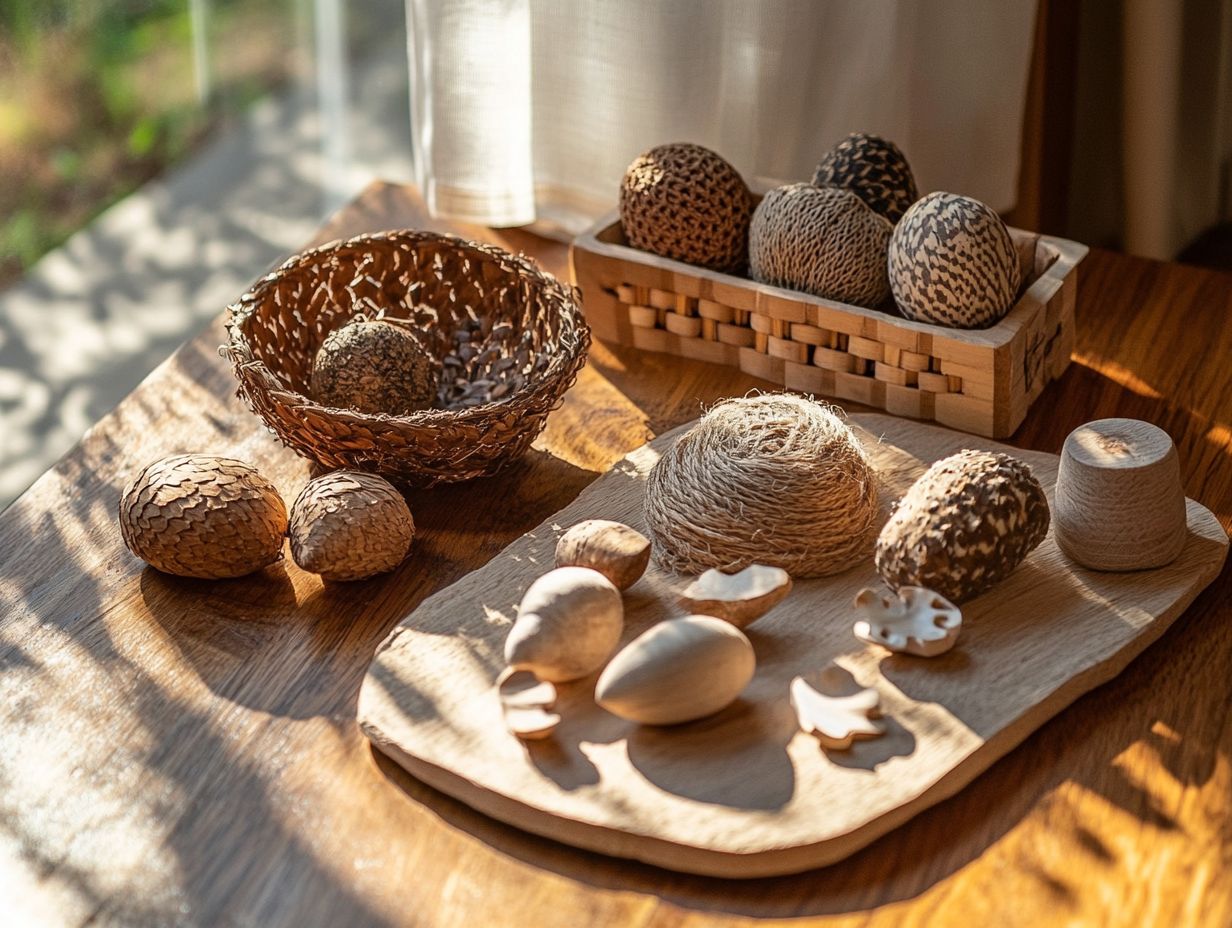
Check materials to ensure safety for your bird.
Avoid toxic and choking hazards by choosing toys made from safe, durable materials.
Explore natural and DIY options for bird toys to create a stimulating environment.
Understanding Bird Toy Materials
Understanding bird toy materials is vital for the safety and well-being of your pet birds, especially parrots. For example, selecting safe chew toys for your bird directly impacts their mental stimulation, playtime, and overall health.
Selecting the right materials helps avoid harmful substances while encouraging natural behaviors. It also ensures the toys are durable and crafted with quality in mind.
As a bird owner, prioritize non-toxic materials and follow safe design principles to create a secure environment for your feathered companions.
Discover Safe Bird Toy Materials
Common materials found in bird toys include natural fibers, cotton ropes, untreated wood, and stainless steel. Each serves a distinct purpose in enhancing your bird’s happiness and mental engagement.
Natural fibers like sisal and jute provide delightful textures for your bird to chew and explore, catering to their instinctive need to forage and play.
Cotton ropes, often seen in brands like Super Bird Creations, are soft yet durable, allowing for safe climbing and chewing without risking injury.
Untreated wood offers various tastes and textures, satisfying your bird’s natural urge to gnaw. Stainless steel components promise longevity and safety, even after numerous play sessions. Companies like Zupreem prioritize non-toxic and vet-approved materials, ensuring you can trust their products for quality and enrichment in your bird’s life.
Potential Risks of Unsafe Materials
The risks associated with unsafe materials in bird toys are significant. To ensure your pet birds are safe, it’s important to understand how to choose the right size of bird toys, as these can help prevent toxicity, choking hazards, and various health issues.
This is especially concerning for species like parrots, which are more susceptible to stress and feather plucking. Prioritizing safe, high-quality toys for your feathered companions is essential for safeguarding their well-being.
Toxicity and Choking Hazards
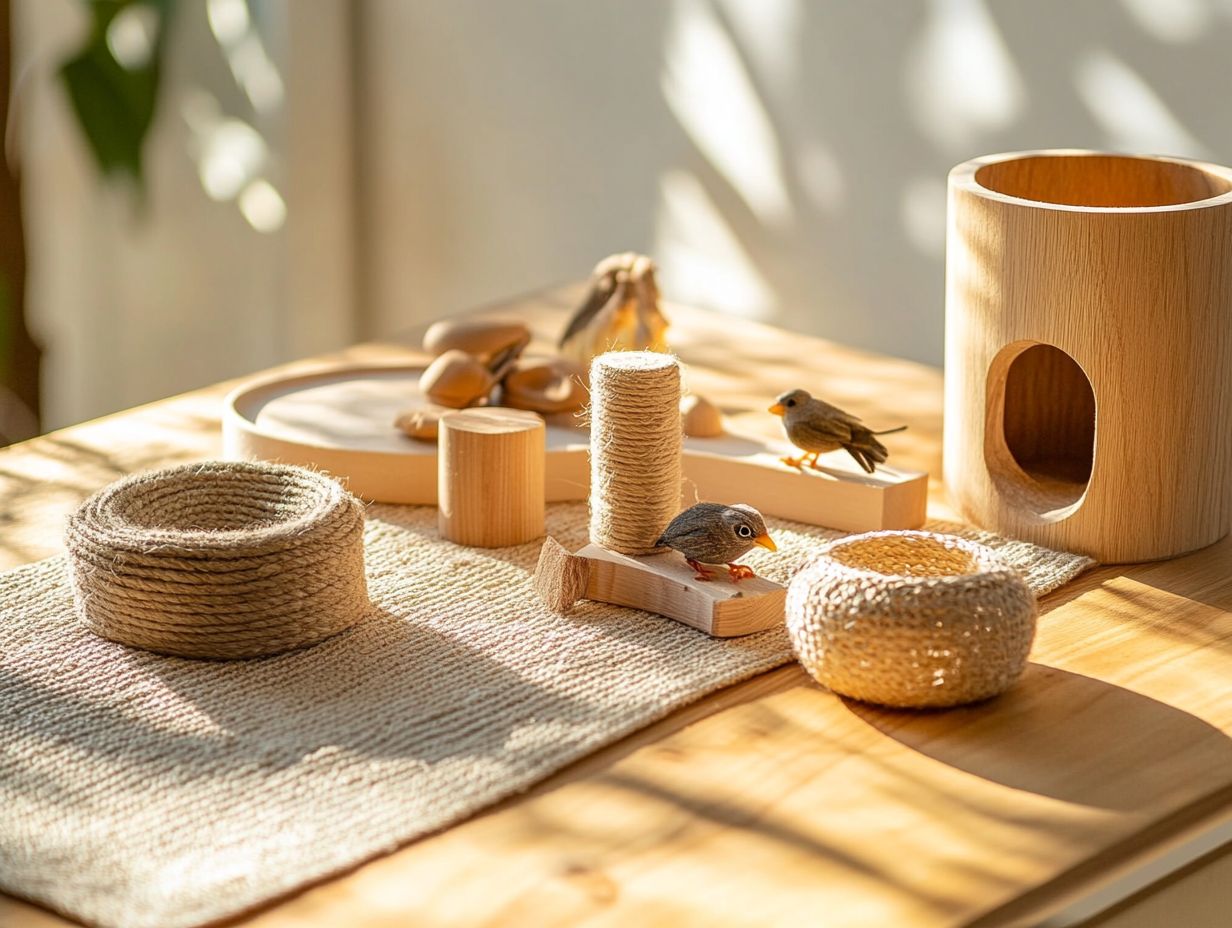
Toxicity and choking hazards are two alarming risks you should be aware of regarding bird toys. Toxic materials can pose serious threats to your bird’s health.
Whether interacting with plastic, paint, or non-bird-safe woods, these materials can lead to severe health issues like organ damage or neurological problems. Choking hazards often go unnoticed; small parts or loose strings may seem harmless but can cause life-threatening blockages.
Regularly inspecting bird toys for wear and tear is crucial. Even slight deterioration can heighten these risks. By prioritizing the safety and welfare of your feathered companions, you ensure their happiness and reinforce your responsibility in maintaining a hazard-free environment.
Tips for Choosing Safe Bird Toys
Selecting safe bird toys is crucial for ensuring your feathered friend’s safety and happiness. By learning how to safely use bird toys with multiple birds, you provide playtime stimulation that enhances their well-being while minimizing the risks associated with harmful materials.
Choosing the right toys lets your bird thrive and enjoy a fun-filled environment!
Things to Consider Before Purchasing
Before you purchase bird toys, consider several critical factors, including safety, quality manufacturing, and how to safely clean bird toys and accessories to ensure they remain safe for your pet.
Evaluate the design features that protect your birds from potential hazards. Prioritize toys that lack small parts that could be swallowed and sharp edges that might cause injury. The reputation of the manufacturers is also paramount; brands committed to safety standards and user satisfaction typically provide reliable products.
Research these brands to read reviews and verify certifications to ensure you re investing in toys that foster healthy, safe interactions for your feathered companions.
Alternatives to Traditional Bird Toys
Exploring alternatives to traditional bird toys presents a wonderful opportunity to enrich your pet bird s environment, fostering mental stimulation and preventing boredom.
By introducing unique options such as foraging toys toys designed to encourage birds to search for hidden treats and DIY bird toys, you enable your feathered friend to engage in their natural behaviors, enhancing their overall well-being and happiness.
Natural and DIY Options
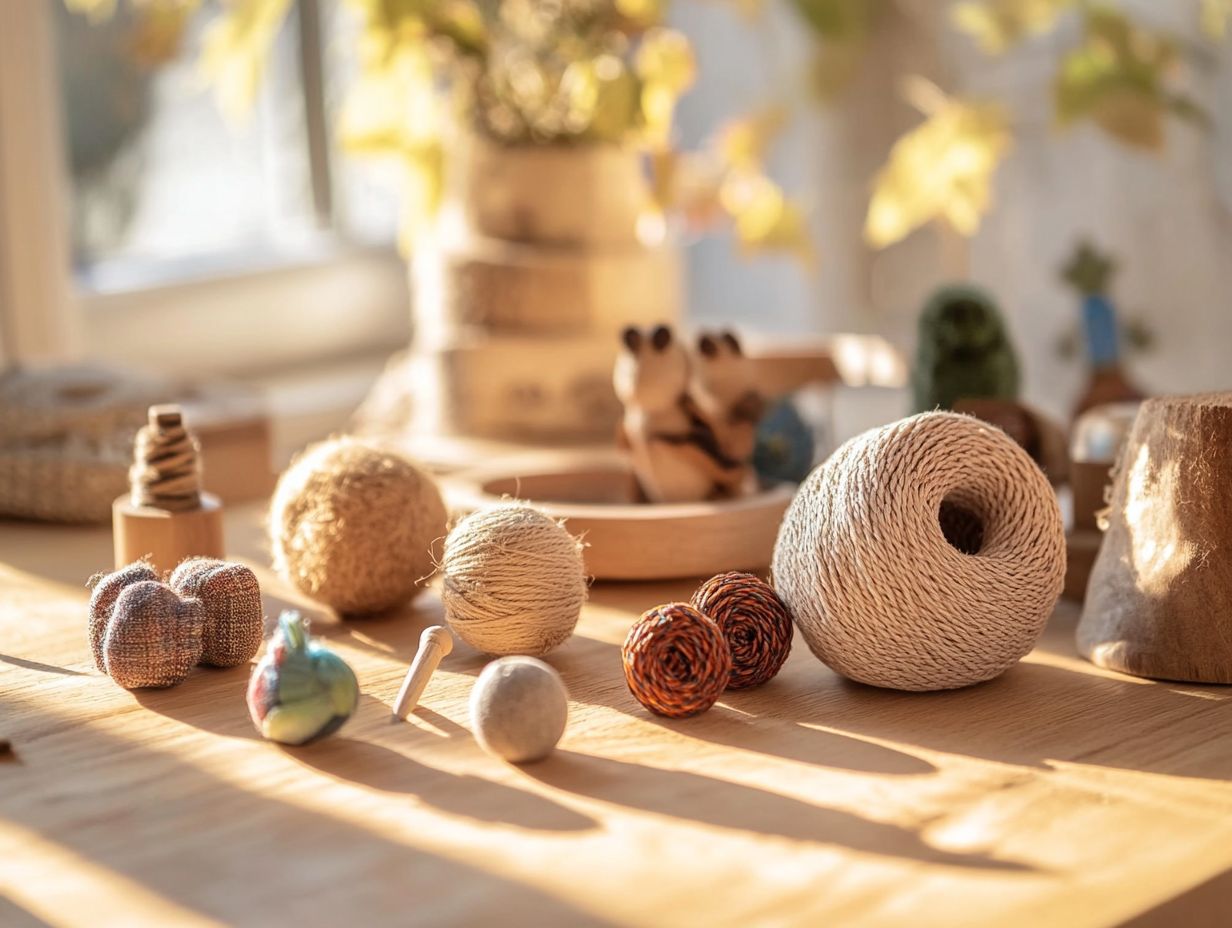
Natural and DIY options for bird toys often feature materials like natural fibers and safe fasteners. These engage your birds in meaningful play while warding off boredom.
When crafting these toys, you can use untreated woods, hemp ropes, and even vibrant, non-toxic plant-based dyes. To ensure safety, it’s important to understand how to evaluate bird toy hygiene. This process allows you to create personalized playthings and offers a delightful opportunity to observe how your birds interact with their new toys.
By incorporating elements like bell attachments and various textures, you can cater to their natural instincts to chew and explore. These toys promote both physical activity and mental stimulation, helping to alleviate stress and enhance overall well-being. The joy of using natural materials elevates playtime into a fulfilling experience for your feathered companions.
Proper Care and Maintenance of Bird Toys
You must prioritize the proper care and maintenance of bird toys to prevent potential hazards and promote the well-being of your feathered companions. Regularly cleaning and promptly replacing toys minimizes risks associated with wear and tear, ensuring a safe and joyful environment for your pet birds.
Cleaning and Replacing Toys
Cleaning and replacing toys is essential for ensuring the safety of your birds and protecting their health. This practice helps prevent the buildup of harmful bacteria and extends the life of the toys.
Regular maintenance keeps the toys hygienic and significantly contributes to the overall well-being of your feathered friends. For wooden toys, a simple mixture of vinegar and water often does the trick, while plastic toys might need a deeper clean with some mild soapy water.
Watch for signs that a toy needs replacing: look for visible wear and tear, like splinters or frayed edges, and any stains that won t budge. Recognizing these signs is essential for maintaining a safe and enriching space for your avian companions.
Frequently Asked Questions
What materials should I avoid when choosing bird toys?
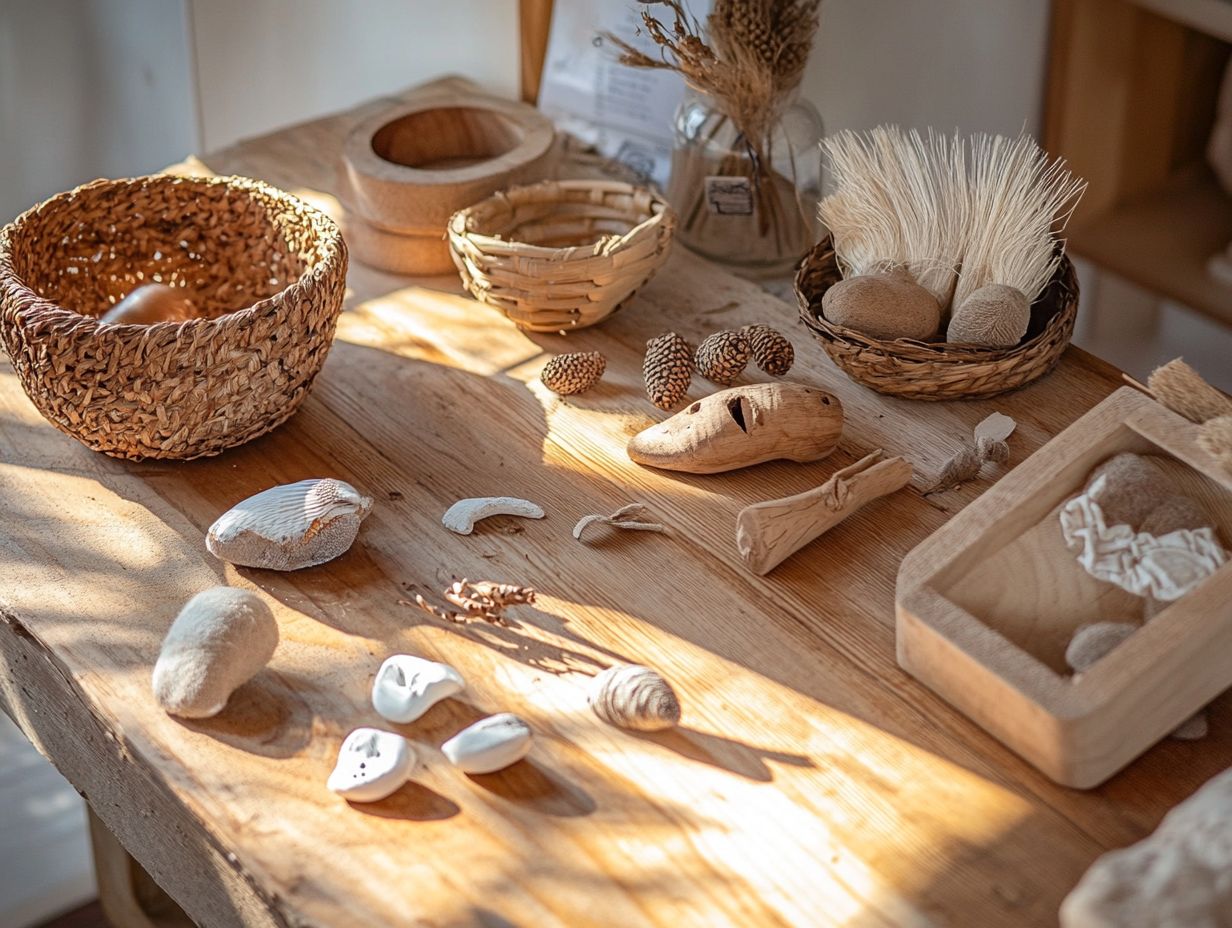
Avoid materials such as lead, zinc, and copper as they can be toxic to birds. Additionally, steering clear of any materials that can easily break apart is crucial. For more creative options, check out how to make homemade bird toys that are safe and enjoyable for your feathered friends.
Don’t wait ensure your bird’s safety and happiness today by investing in the right toys!
Are all plastic materials safe for bird toys?
No, not all plastic materials are safe for bird toys. Choose toys made from non-toxic, food-grade plastics tested for bird safety, and consider the benefits of natural materials in bird cages for a healthier environment.
What types of wood are safe for bird toys?
Bird-safe woods include pine, ash, balsa, and bamboo. Avoid treated woods or those with sharp edges that could harm your bird.
Can I use household items to make bird toys?
You can use household items. Just clean and sanitize them thoroughly before making bird toys.
Avoid anything that contains harmful chemicals or small parts that your bird might ingest.
How can I tell if a bird toy is safe for my bird?
Look for toys labeled as safe for birds. Always check for sharp edges, small pieces, or toxic materials before giving them to your pet, as understanding the dangers of bird toys is crucial for their safety.
Can I make my own bird toys at home?
Absolutely! DIY bird toys can be a fun and safe project. Just use non-toxic materials and follow trusted guides. Monitor your bird while they play to ensure safety.
